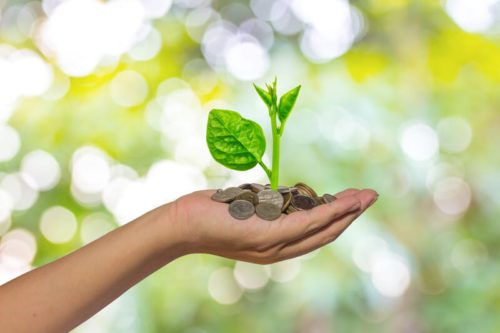Is Eco-Investing Viable
Going Green eco-investing is a highly emotive area and can cause anxiety and stress for some people who are trying to do the ‘right’ thing for the planet, at the same time as doing the right thing for themselves.
For older Australians trying to maximise their retirement funds, the pressure to ‘ensure an income’ versus following their gut and heart can suck the joy out of retirement.
‘Going Green’ or Eco-Investing as part of an investment strategy is becoming a real ‘thing’ in the investment world now. But how viable is this strategy?
Eco-investing attempts to profit from the transition from carbon-consuming energy systems to those that rely on renewable or carbon-neutral sources of energy. It also includes the investment in companies that provide environmentally friendly products or services.
on renewable or carbon-neutral sources of energy. It also includes the investment in companies that provide environmentally friendly products or services.
The terms green investing, eco-investing and socially responsible investing are often used interchangeably. Eco-investing or green investing is a subcategory of socially responsible investing.
Investment
There are multiple eco-investing sectors:
- Eco Living. Companies in this sector provide services and goods related to healthy living. This includes items related to health care, organic farming, and ecologically sound pesticides, herbicides, and fertilizers. If you have an interest in green farming, this sector might be a great fit.
- Renewable energy. This is the best-known category to the average investor and includes companies that produce solar panels, wind turbines, and water-driven turbines. The companies that provide the parts and raw materials to these companies are also considered part of this sector.
- Energy storage. All that energy from solar panels has to be stored. The fuel cells in hybrid cars and other battery devices for storing energy are part of the energy-storing sector. Energy storage is expensive, but technological advances are bringing down the costs. The cost of energy storage prevents many homeowners from utilizing solar or wind energy.
- Biofuels are produced from waste or other biological materials. Bio-diesel and fuel from corn or algae are a few common examples. These fuels are much easier on the environment and have the potential to be less expensive.
- Buildings and Efficiency. These companies produce green building materials, such as energy-efficient glass and insulation. Companies that deal with recycling are also included. Many of these companies have been around for a very long time and can be more stable than companies in the other categories.
You can limit yourself to a single sector or invest across the board. There are many companies from which to choose. Focus on understanding one sector before moving on to another. Good opportunities can be found in any sector.
Going Green eco-investing
Several options exist for the green investor:
- Individual stocks. You find, research, and invest in individual stocks that fall under the broad category of green investing. Search for the term, “green stocks” to get started.
- Mutual funds. If you’d rather leave the stock research to a professional, consider purchasing a mutual fund that targets green companies. Mutual funds also provide automatic diversification. Just remember that you can get less diversification
 than with a more conventional mutual fund.
than with a more conventional mutual fund. - Green companies need to borrow money, too. Sometimes, the government also offers bonds that support green initiatives. There are green bond funds, too. Bonds are a good option if you need income from your investments.
Common Mistakes
Be careful of a few common mistakes when investing in green companies. Many green companies are heavily dependent on government assistance in one form or another. For instance, big tax breaks for consumers that purchase solar panels can make a manufacturer very profitable. When those tax breaks expire, far fewer consumers are willing to purchase solar panels.
Also, be aware of companies that heavily market their “green-ness”. At the end of the day, good companies turn a profit. Avoid being swayed only by the great things the company is doing for the environment. A company that goes bankrupt won’t do much to enhance your investment portfolio.
Green investing can be a great way to secure your financial future while being gentle on your conscience. Remember that it is still important to make smart investing decisions.
Live Consciously
Any investment that creates stress and anxiety to the point of interfering with the joy of life, should be avoided. Especially for retirees. In my opinion, there are so many other ways to support the planet. Plant trees, donate to “Green” causes and be environmentally aware with recycling, product use, and lifestyle. How you live daily has more impact on the environment and Mother Earth than anything else you can do.


 than with a more conventional mutual fund.
than with a more conventional mutual fund.